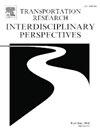Correlation analysis between disease mortality and public transportation coverage: The case of Taiwan
IF 3.9
Q2 TRANSPORTATION
Transportation Research Interdisciplinary Perspectives
Pub Date : 2025-01-01
DOI:10.1016/j.trip.2024.101316
引用次数: 0
Abstract
Accessibility is an important concept, not only in transportation but also in healthcare. The World Health Organization (WHO) and the Organization for Economic Cooperation and Development (OECD) have listed the inconvenience of traveling between healthcare facilities and households as one of the causes of health inequalities. This study investigates the correlation between disease mortality and coverage of public transportation by collecting the mortality rate of major diseases during 2017–2019 and the coverage rate of public transit during 2015–2019 to conduct correlation coefficient analysis, hypothesis test, and multiple regression formulation. The results show a negative correlation between disease mortality and public transportation coverage rates. Furthermore, the absolute values of this correlation coefficient for chronic diseases are higher than 0.3 for all considered periods; they are more marked than those of other diseases in the nine selected regions, with a standard deviation of public transport coverage exceeding 10%. In addition, the negative correlation between the crude mortality rate of malignant neoplasms and the public transportation coverage during the same year in Yunlin County is −0.353, which is stronger than that for all nine regions considered, and its corresponding regression mode is valid, the -coefficient, −0.894. The overall results indicate a difference in health outcomes among districts with various public transport coverage.
求助全文
约1分钟内获得全文
求助全文
来源期刊

Transportation Research Interdisciplinary Perspectives
Engineering-Automotive Engineering
CiteScore
12.90
自引率
0.00%
发文量
185
审稿时长
22 weeks
 求助内容:
求助内容: 应助结果提醒方式:
应助结果提醒方式:


